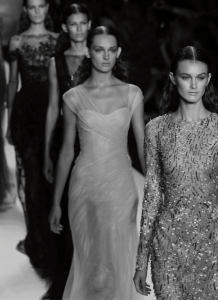
The fashion industry is under pressure. The crisis, which started in the second half of 2008 had shrunk the spending on clothing and footwear among consumers. The emergence of especially online sales and the growth of multinational fast fashion chains has shaken up the field. Fashionable clothes and rapidly changing collections at ever lower prices can count on the favor of consumers. Scale, cost and speed are decisive in a fight that is increasingly happening at global level. Many independent shops, but also larger existing chains seem not to follow the game and quit.
The flipside of the importance of scale, speed, and cost is an increasing pressure on the supply chain, especially in manufacturing. The balance between sustainability, ethics and efficiency is not always present and threatens to further derail the race to provide people with clothing in the future.
Two opposite scenarios show how certain trends will shape the future of the fashion industry mold. In the price-oriented scenario is expanding fast fashion its dominance. The world is supplied with affordable fashion, but there is on sustainability and ethics a price paid for.
In the quality-oriented scenario, the market is changing its way of thinking; quality before quantity. Durability is an integral part therein. Solutions are more and more sought after in new technology. Vertical integration, operated by fast fashion chains, is developed and ultimately leading to an advanced ‘smart’ chain between production and demand are highly coordinated. Sustainability, ethics and efficiency benefit. Affordability, dressing of an expanding world population and developing economies in underdeveloped countries, however, are less into their own.
The actual future is likely to be a mix of elements from these two scenarios. The dominance of one of the two scenarios may include a market or even a different product. For the balance between sustainability, ethics and efficiency, it is however hoped that the market is not entirely bogged down thinking in price-oriented, but also provides space for an out-of-the-box thinking.
The ongoing vertical integration can lead to more high-technology sector, which is actually a trendsetter. Industry and society benefit when resisting the temptation of it, the short-term, low-cost alternative.
A critical view of industry and consumers to shift the emphasis towards quality and value and thus the fashion sector in the long term help to a healthy future.


